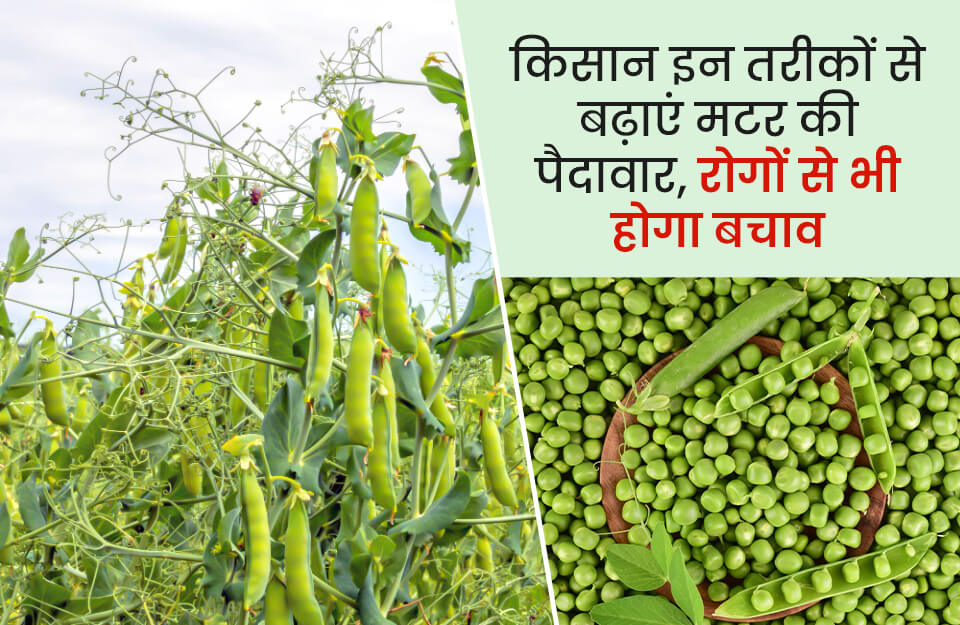
Green pea is currently coming to the market in larger quantities. It is used not only in vegetables but also in many other things. Moreover, its demand remains almost throughout the year. Its price remains between 40 to 50 rupees per kilogram during the winter season. In such a scenario, farmers who cultivate green peas also benefit. However, there are some techniques that farmers can use to double their profits and pea production. Additionally, these techniques can help farmers combat diseases affecting peas.
The selection of soil or land is the most important aspect of pea cultivation. Farmers cannot cultivate peas in any type of field. For pea cultivation, loamy and sandy soil are considered good. Better yields are obtained from cultivating peas in loamy and sandy soil. Moreover, the pH value of the soil should be between 6-7.5. Additionally, before sowing, farmers should deep plow the field thoroughly. After that, they should level the field using a plank. If there is an infestation of termites, white ants, or leaf miners in the soil, farmers should spread 10-12 kilograms of Foret 10G per hectare during the final plowing to prevent the crops from getting infected.
Before sowing, farmers should also pay attention to the quality and quantity of seeds. If good quality seeds are not sown in the field, better yields will not be obtained. If farmers want to cultivate tall varieties of peas, they should sow 70 to 80 kilograms of seeds per hectare. On the other hand, for dwarf varieties, the seed quantity should be kept at 100 kilograms per hectare. Additionally, seeds should always be sown in rows.
According to agricultural experts, seeds should be treated before sowing to ensure proper germination and minimize pest infestation in the crops. Farmers can treat the seeds to prevent seed-borne diseases by using a fungicide called Thiram + Carbendazim (2%1) at a rate of 3 grams per kilogram of seeds. Additionally, to prevent the crops from sucking pests, farmers should treat the seeds with Thiomethoxam at a rate of 3 grams per kilogram of seeds. Moreover, to increase crop production, during sowing, farmers should apply 60 kilograms of potassium and 20 kilograms of sulfur per hectare in the field.